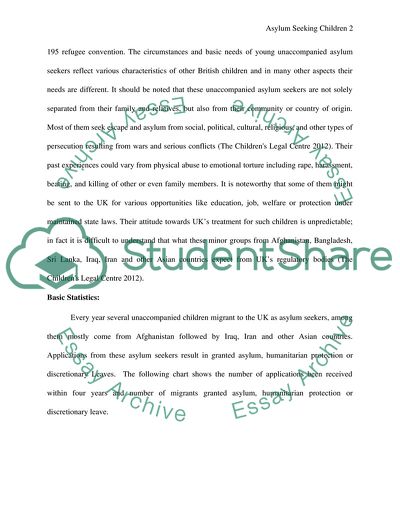Cite this document
(“Unaccompanied Asylum Seeking Children Essay Example | Topics and Well Written Essays - 1500 words”, n.d.)
Unaccompanied Asylum Seeking Children Essay Example | Topics and Well Written Essays - 1500 words. Retrieved from https://studentshare.org/sociology/1612139-immigration-and-asylum-working-with-unaccompanied-asylum-seeking-children-in-united-kingdom
Unaccompanied Asylum Seeking Children Essay Example | Topics and Well Written Essays - 1500 words. Retrieved from https://studentshare.org/sociology/1612139-immigration-and-asylum-working-with-unaccompanied-asylum-seeking-children-in-united-kingdom
(Unaccompanied Asylum Seeking Children Essay Example | Topics and Well Written Essays - 1500 Words)
Unaccompanied Asylum Seeking Children Essay Example | Topics and Well Written Essays - 1500 Words. https://studentshare.org/sociology/1612139-immigration-and-asylum-working-with-unaccompanied-asylum-seeking-children-in-united-kingdom.
Unaccompanied Asylum Seeking Children Essay Example | Topics and Well Written Essays - 1500 Words. https://studentshare.org/sociology/1612139-immigration-and-asylum-working-with-unaccompanied-asylum-seeking-children-in-united-kingdom.
“Unaccompanied Asylum Seeking Children Essay Example | Topics and Well Written Essays - 1500 Words”, n.d. https://studentshare.org/sociology/1612139-immigration-and-asylum-working-with-unaccompanied-asylum-seeking-children-in-united-kingdom.


